
In early 2025, photographer Paul Clemence documented Kö-Bogen II, a commercial and office complex designed by ingenhoven architects in Düsseldorf, Germany. The photo series focuses on the building's signature feature: its vast green façade, considered one of the largest in Europe. Referred to as a "green heart" and an "urban mountain," the building has become a landmark in the city due to its sloping surfaces wrapped in over 30,000 hornbeam plants. For Clemence, this was an unforeseen encounter during his first visit to Düsseldorf, which he describes as an unexpected meeting with a "stunning green pyramid."
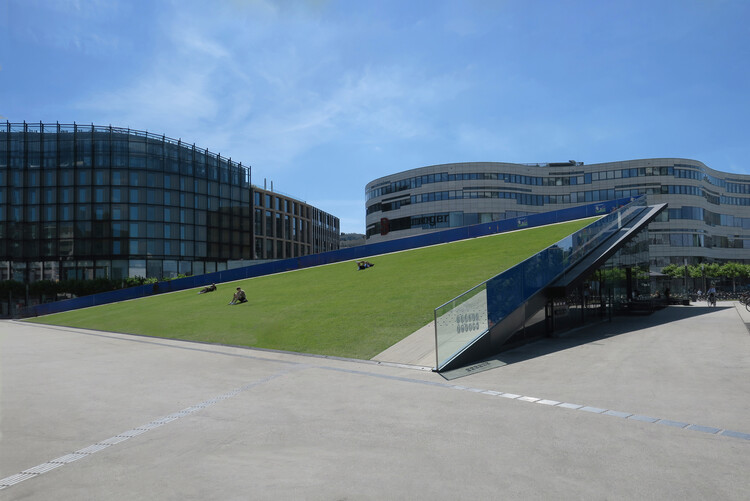
Completed in 2020, Kö-Bogen II is strategically positioned between the Court Garden, Düsseldorf's central park, and Schadowstraße, one of the city's busiest shopping streets. It sits across from the Three-Slab High-Rise and beside the Düsseldorf Playhouse, two emblematic examples of post-war modern architecture. In Clemence's view, the building acts as a visual and spatial connector between these iconic neighbors and the surrounding urban fabric, its distinctive volume "softened" by the lush green envelope that wraps its façades.
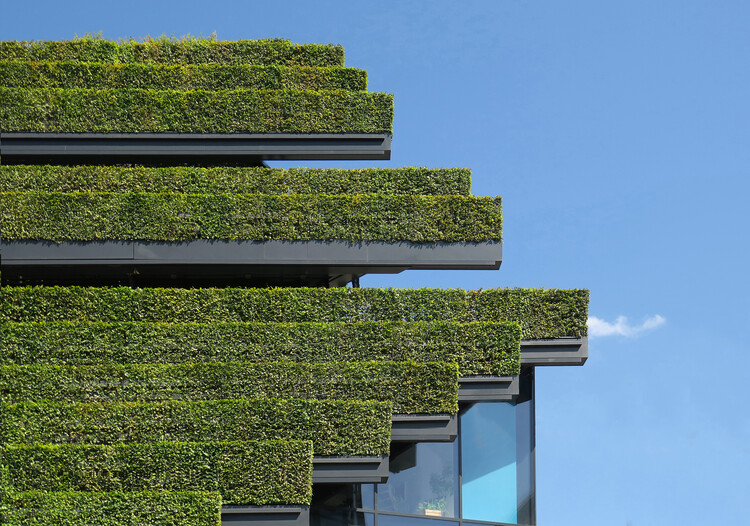
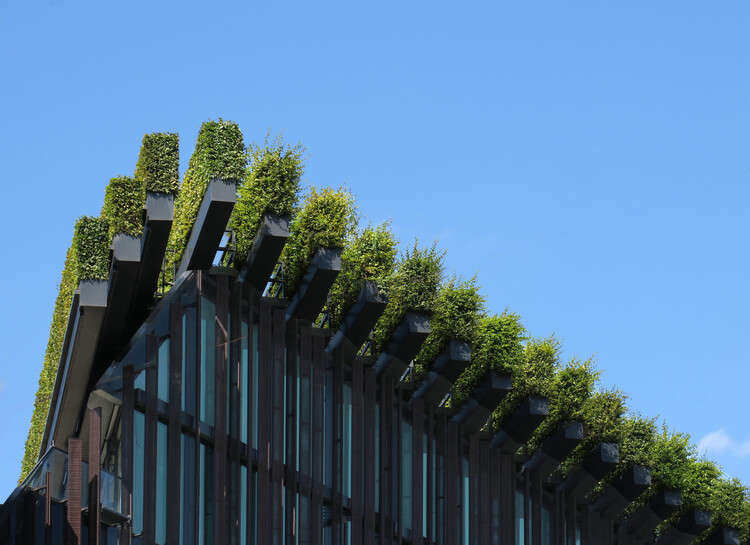
The building's design departs from the conventional block typology, taking on a trapezoidal form with sloped surfaces that face the adjacent square and park. These inclined planes are entirely covered in hornbeam hedges, creating a stepped, vegetal façade that stretches more than 8 kilometers when measured flat. This living surface not only defines the building's appearance but it's also thought to serve environmental functions: improving air quality, reducing the urban heat island effect, providing sound insulation, and fostering urban biodiversity. A custom irrigation and trimming system ensures that the greenery remains lush and well-maintained throughout the year.
Clemence's photos underscore how the green façade is not merely an aesthetic feature, but an integral part of the building's architecture. From his perspective, the building contains a message: "Architecture can not only be designed for environmental sustainability, it can become the environment itself." His images highlight how the plants shape the identity of the building, transforming what could be a massive urban volume into a living form.
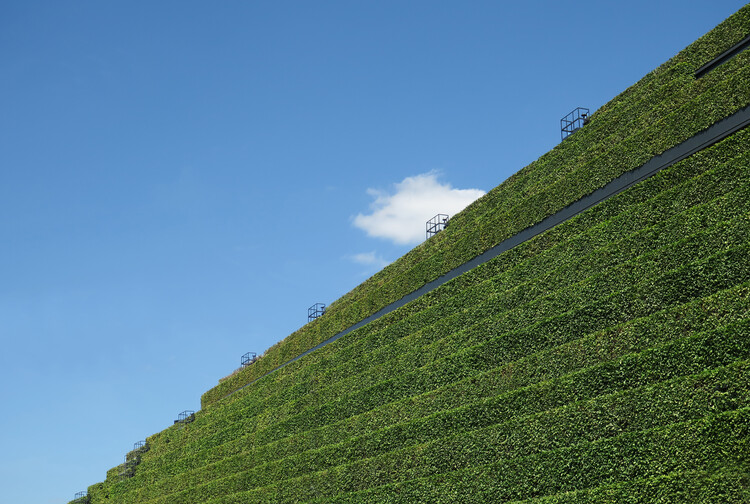
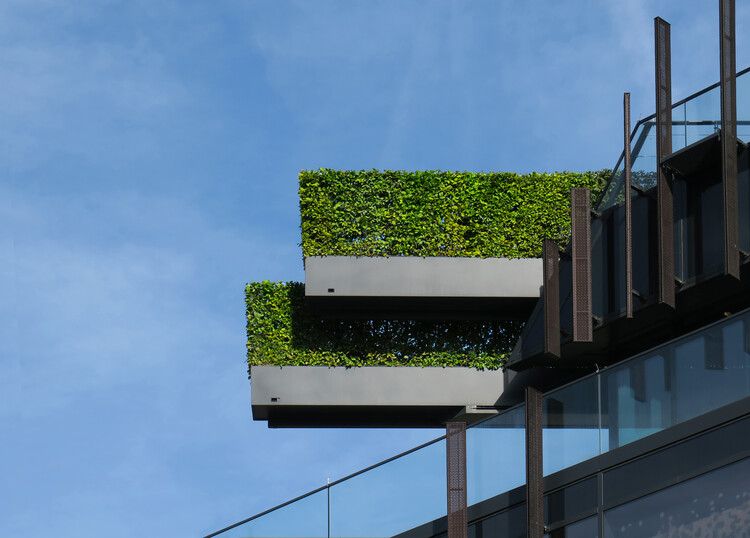
The integration of vegetation can be considered a hallmark of Ingenhoven Architects' work, also visible in projects like the Toranomon Hills Tower in Tokyo and the Marina One complex in Singapore. Paul Clemence's photographic portfolio includes many such architectural icons worldwide, from Ruy Ohtake's Bioparque Pantanal in Brazil's wetlands to the Academy Museum of Motion Pictures, revitalized by Gensler and Renzo Piano Building Workshop, and the Eco-District of Clichy-Batignolles in Paris. Most recently, he documented Brazilian artist Ernesto Neto's immersive installation at the newly reopened Grand Palais, also in Paris, continuing his exploration of the intersection between architecture, environment, and art.


























